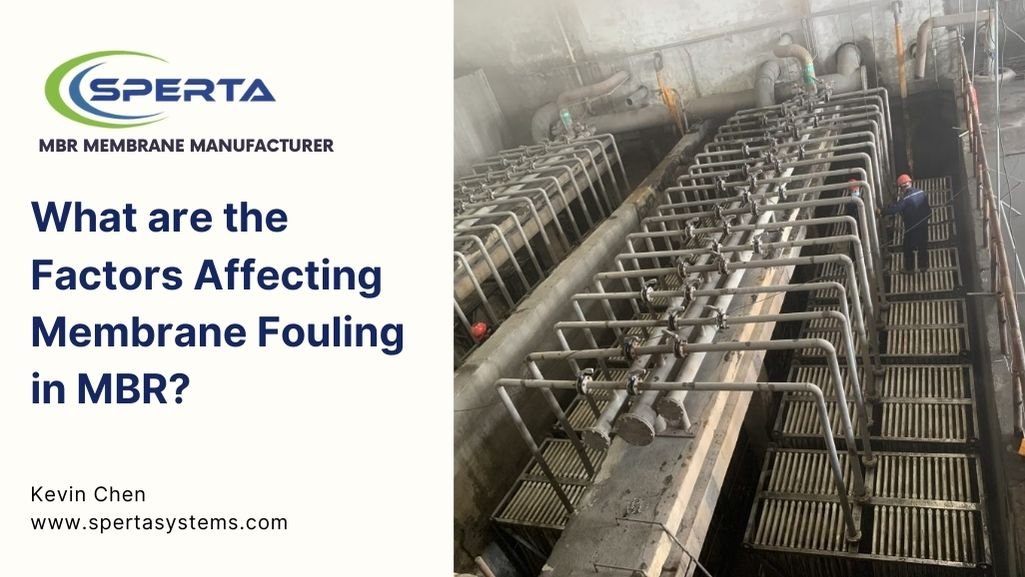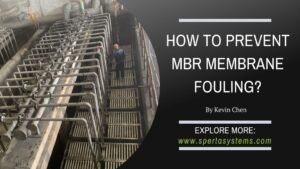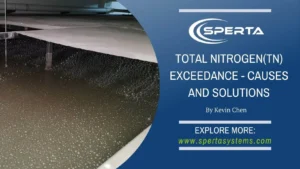Imagine the frustration when your MBR system’s performance drops. The culprit? The culprit is membrane fouling. It is a complex issue influenced by a range of factors. The wastewater treatment process for MBR membranes is like a filter. If the filter is clogged, less water will flow out. Fouling of the MBR membrane slows the wastewater treatment process and increases costs.
There are all kinds of factors that can affect fouling in the MBR membrane. The most important factor is water quality. The second is membrane characteristics. Of course, operating conditions, biological activity, chemical action, and physical forces are also important. Each plays a significant role in the fouling process. And we need to consider carefully for optimal system performance.
SPERTA’s article will take you to dissect these factors, offering valuable insights. And it could save your MBR system from the dreaded slowdown of fouling.
How Does Feed Water Quality Influence Fouling?
The water quality that enters an MBR system is very vital. It can directly impact the extent of membrane fouling. The causes of the blockages are high concentrations of organic matter, suspended solids, and microorganisms. It also influences biofilm formation.
What Role Do Membrane Characteristics Play?
It would be best if you took care of the material and design of the membrane. Different materials have different properties. One must generalize about only some materials. For example, certain materials are more prone to fouling. And smaller pore sizes can become clogged more quickly. Two other reasons will affect the adhesion of foulants: one is the surface charge, and the other is the hydrophilicity of the membrane.
Are Operational Conditions to Blame?
Yes, some operational parameters can either prevent or promote fouling—for instance, aeration and velocity. Adequate aeration can achieve a solid suspension. This process can minimize the accumulation of particles.
Can Biological Activity be Managed to Reduce Fouling?
The primary biological activity in the MBR system is the growth of microorganisms. But it leads to biofouling. One significant hand of reducing fouling is managing the microbial community. The other hand is to prevent biofilm development.
What Chemical Factors Contribute to Fouling?
If you misuse chemical cleaning agents over time, it may cause fouling. Also, certain chemicals in the feed water can react with the membrane or the biomass. It may increase fouling on the membrane.
How do Physical and Mechanical Forces Affect Fouling?
Shear stress, one of the physical forces, plays a dual role on the membrane. It may damage the biofilm and wear the membrane. Some mechanical factors need to be optimized. Like backwashing, it can’t clean effectively without damaging the membrane.
Does System Design Impact Fouling Rates?
The distribution of fluids and solids is affected by the layout of the MBR system. And these factors will affect the structure in turn. Promote uniform flow needs a well-designed system. Preventing areas of sludge accumulation can reduce the risk of fouling.
Conclusion
It is imperative to manage the factors that affect membrane fouling. The smooth operation of MBR systems depends on it. By understanding and addressing these issues, you can maintain high water quality and system efficiency.
The above is information about the MBR membrane fouling issue. If you still have questions about the membrane bioreactor or need to purchase MBR membranes, don’t hesitate to contact SPERTA.
Shanghai SPERTA Environmental Technology Co., Ltd. has specialized in producing water treatment products for many years. The company has the core technology of producing MBR membrane components. It has a high production capacity, aiming to build a high-quality brand of MBR production and sales all over the world. If you have any needs, please feel free to contact us.








